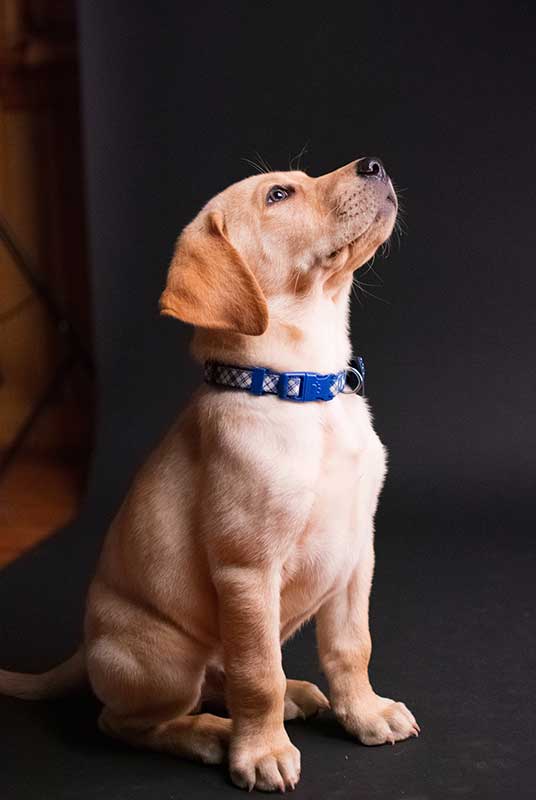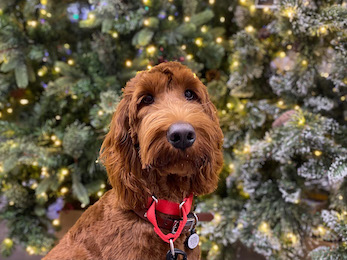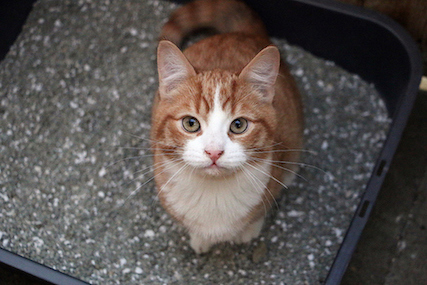Breed History
Labrador Retrievers have ranked as the most popular dog in the United States for thirty one consecutive years (according to the American Kennel Club), and with good reason. These lovable comics actually originated in the Canadian province of Newfoundland and served as general waterdogs, retrieving ducks, and assisting local fishermen. It is unclear when these dogs were erroneously named for the neighboring province of Labrador instead of their homeland, however this likely occurred when the breed began to expand in popularity. In the early 1800’s, visiting English nobility took notice of these fine dogs and imported them back to England where they further standardized the breed and helped shape them into the dogs we recognize today. First registered by the American Kennel Club in 1917, they steadily gained popularity and finally reached the top of the list in 1991, reigning supreme ever since.
Breed Characteristics
The Labrador Retriever is of medium to large size, generally weighing between 55lb and 80lbs at adulthood. They retain many characteristics that would have been crucial in their original roles, ensuring a hardy and robust dog that can withstand a wide range of harsh conditions. Their stocky frame and thick double coat of medium length, which works to repel water, serve them well when swimming in cold climates and hunting in less than ideal weather. Labs are recognized in three classic colors, yellow, black and chocolate with some additional variance in shades within those colors. This breed is often very food motivated, and may overeat to the point of unhealthy weight gain if not provided with a good quality and balanced diet. Due to their deep-chested confirmation some Labs may be susceptible to bloat (gastric dilatation volvulus), which is often associated with eating large meals very rapidly. While generally a healthy and vital breed, some genetic diseases can be seen including; elbow and hip dysplasia, hereditary myopathy, various heart disorders, progressive retinal atrophy, and other eye issues. Additionally, genetic testing for exercise induced collapse (EIC) should be included to identify carriers and avoid producing any dogs who would express this disease.
Is a Labrador Retriever Right for You?

As with any breed who has working roots, providing adequate outlets for physical and mental exercise is key to producing a well rounded dog. For many Labs, their willingness and ability to pursue any athletic activity persists well into late adulthood, often resulting in an adult dog who still behaves with the enthusiasm of a puppy! With their social outlook and animated approach to life, Labs are suited to a wide variety of individual and team pursuits. Many members of the breed still engage in traditional tasks such as hunting and field trials, as well as, dock diving and other swimming sports. For many Labs, the combination of favored toys and swimmable water creates heaven on earth! For those Labs that may not live near large bodies of water, or have access to dog pools, many other activities still hold great appeal. Many Retrievers find great joy in running or biking with their people or mastering the agility, obedience or flyball arenas. With their high aptitude for training and love of people, Labs can also make ideal service and therapy dogs.
Common behavioral struggles with this breed, especially when they are younger, include jumping on household members and guests and general overexuberance when excited. The Lab’s strong desire to pick things up and carry them in their mouths can also lead to play biting around people, as well as, picking up inappropriate items around the house and neighborhood. This desire to carry things in their mouths can also be an exceedingly endearing habit, as many dogs will choose favorite toys or objects which they will tote around with great pleasure or bring to their humans to show off with clear pride! Appropriate understanding and management of these genetic tendencies is important to secure household harmony.
Finding your next family member

When choosing a puppy of this breed, ensure that appropriate health testing has been done on both parents and possibly grandparents. The American Kennel Club outlines what tests are suggested for each breed to prevent the continuation of genetic diseases. The recommended health tests for Retrievers include hip and elbow evaluations, and ophthalmic and EIC genetic testing. When meeting the puppies, ask to see both parents and any other related dogs that may be on site. Both puppies and adult members of the breed should seem friendly and sociable, any sign of aggression (apart from a female with very young puppies) should be cause for concern. Responsible breeders should be invested in finding the best homes possible for their puppies, so expect lots of questions and detailed conversations about setting new puppies up for success. Seek out breeders who are willing and able to provide support and information long after you take your new addition home. Most breed enthusiasts will be involved in confirmation exhibitions or other sports to help further the breed, with the production of puppies as a secondary goal. When inspecting the puppy raising areas, watch for good hygiene and sanitation which will lead to healthy puppies. Since proper socialization starts well before puppies are ready to leave their mothers, it is important to consider what types of early experiences each litter has been exposed to. Puppies who have lots of early, controlled, positive, experiences with a variety of people, animals and environments are generally predisposed to later social success.
If your new family member is coming from a rescue situation, it may not be possible to gather some of this information. However, many of the same guidelines will apply. Look for a happy, outgoing dog who is willing to approach and engage with you. Given that the shelter environment can be overwhelming for some dogs, some level of initial reticence or shyness may be seen. Taking dogs for a brief walk outside of the rescue can sometimes help them relax and bring out more of their true personality.




